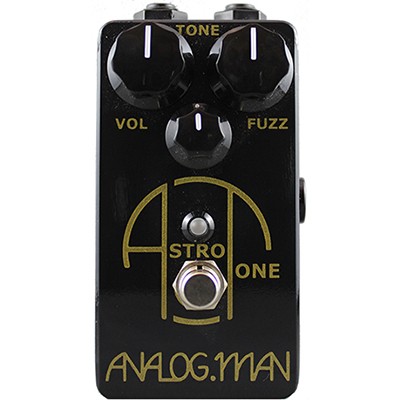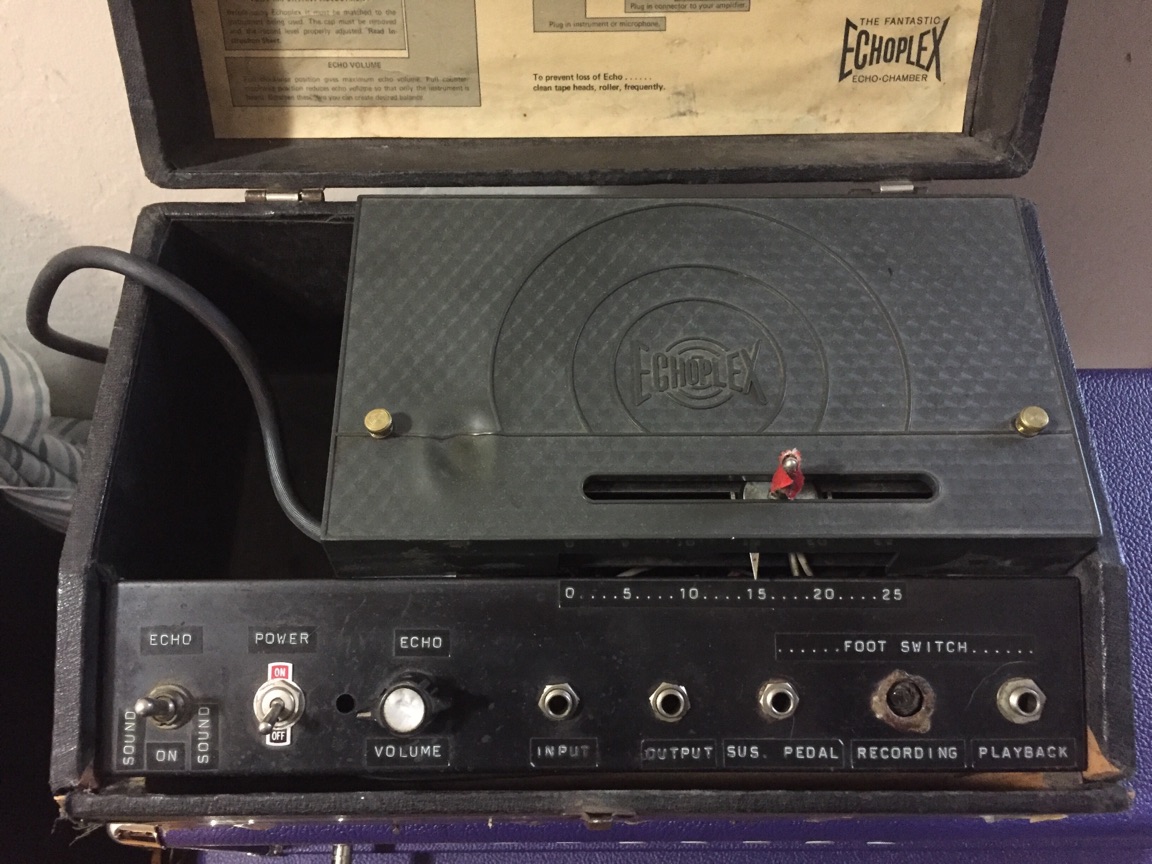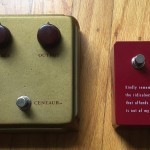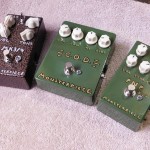Many pieces of my collection of instruments, amplifiers, pedals and more that I’ve enjoyed over the years are now being offered for sale. I’ll continue to list more as I can so do check back often. Contact me directly for pricing IF it’s not listed as the market always fluctuates, BUT I will always strive to provide both fair and often below-market pricing for these pieces. It’s time to let others enjoy them and I’ll note where there’s special provenance or history of use behind them. Contact me directly at [email protected] to discuss. Enjoy the list and photos!
Category Archives: Effects Features
Finding the Fuzzy Magic: Analog Man Mike Piera Mods and Demos our Fuzz Face
In the world of boutique fuzz pedal effects, Analog Man Mike Piera’s creations are among the most well-known and respected due to his attention to detail. His Sun Face fuzz is his most popular and based on the original Arbiter England Fuzz Face which was first introduced in 1966, but unlike the original which was built with a range of poorly matched components and haphazard quality control, Piera’s are built like finely tuned machines with every component being carefully measured and tested. Fuzz connoisseurs like Eric Johnson have reportedly gone through hundreds of Face Faces until finding just the right one. In any fuzz based around germanium transistors, proper matching, leakage testing, and biasing are all critical in order to get the most musical and harmonically rich fuzz.
Ibanez Nutube Tube Screamer vs. original TS-808
 In a market saturated with numerous different Tube Screamers in addition to various clones and modified units, Ibanez recently introduced a bold and unique entry with its latest Nutube Tube Screamer. The Nutube Tube Screamer most notably uses a Korg-designed Nutube module, which is said to work in a similar way to a traditional vacuum tube. However, as I’ll discuss later, this isn’t the feature that impressed me the most with the Nutube Tube Screamer, although the NuTube technology itself certainly will grab the most attention for prospective buyers.
In a market saturated with numerous different Tube Screamers in addition to various clones and modified units, Ibanez recently introduced a bold and unique entry with its latest Nutube Tube Screamer. The Nutube Tube Screamer most notably uses a Korg-designed Nutube module, which is said to work in a similar way to a traditional vacuum tube. However, as I’ll discuss later, this isn’t the feature that impressed me the most with the Nutube Tube Screamer, although the NuTube technology itself certainly will grab the most attention for prospective buyers.
Read More »
Analog Man Astro Tone Fuzz Review: The Fuzz to Win Over the Anti-Fuzz Player
 Fuzz pedals are notoriously finicky. Not only can some fuzz boxes themselves sound different based on their own component variances and the environment or temperature they are used in, but they are always dependent on the gear that they are being used with as well. Case in point is the classic germanium Fuzz Face beloved by Hendrix. Sure, when it’s in front of a Marshall that is already overdriven, you’ll get some magic happening by adding those bits of germanium magic. But…
Fuzz pedals are notoriously finicky. Not only can some fuzz boxes themselves sound different based on their own component variances and the environment or temperature they are used in, but they are always dependent on the gear that they are being used with as well. Case in point is the classic germanium Fuzz Face beloved by Hendrix. Sure, when it’s in front of a Marshall that is already overdriven, you’ll get some magic happening by adding those bits of germanium magic. But…
…stick that same Fuzz Face in front of a Fender blackface amp and you’ll hear a whole different, and very ugly, side to the Fuzz Face. And turn on the bright switch on your old blackface and you’ll be pummeled with an even more horrid and brittle sound.
Read More »
How to Chain Your Effect Pedals – A Basic Primer
 We’d like to introduce and welcome a guest blog from Natalie over at MusicalAdvisors.com. She has some tips to offer for those interested in using guitar effects. Consider these a good starting point for readers looking for introductory advice – DS
We’d like to introduce and welcome a guest blog from Natalie over at MusicalAdvisors.com. She has some tips to offer for those interested in using guitar effects. Consider these a good starting point for readers looking for introductory advice – DS
Guitar effect pedals are an excellent way to take your music to the next level by adding texture, volume, resonance, or modulation effects. The best guitarists in history, such as Hendrix and Van Halen, have made effect pedals a staple for all rock styles of music. As a musician myself, I’ve learned the ideal way to organize my pedals on a pedalboard through years of trial and error. If you’re looking to create a pedal chain to make your music more complex, there are a few basic principles you can follow to optimize your sound.
Read More »
Modified Classic Overdrive/Distortion Units Reborn from Analogman, Keeley, and TWA
 Not every overdrive or distortion pedal has a pedigree that begins with the influence from a Tube Screamer. Many of today’s designers look to other classics to either modify or create their own variations. Today we’ll spend time with the Analogman DS-1 Pro Mod with midrange control, Keeley’s Super Phat Mod Full Range Overdrive and the Totally Wycked Audio (TWA) Hot Sake. Each has its own unique story and tone so join us as we explore them further.
Not every overdrive or distortion pedal has a pedigree that begins with the influence from a Tube Screamer. Many of today’s designers look to other classics to either modify or create their own variations. Today we’ll spend time with the Analogman DS-1 Pro Mod with midrange control, Keeley’s Super Phat Mod Full Range Overdrive and the Totally Wycked Audio (TWA) Hot Sake. Each has its own unique story and tone so join us as we explore them further.
Read More »
George Lynch’s 1973 EP-3 Echoplex Tape Echo Previously Owned by Eddie Van Halen
 I wanted to share an interesting story and historical piece for you, our dear readers. First some background on the Echoplex tape echo. If you haven’t played through an Echoplex, they are truly legendary tape echo units and should be experienced. In the 1960s and 1970s, when you wanted echo, tape echo was the way to do it. When smaller solid state echo pedals emerged during the mid ‘70s using Bucket Brigade Device (BBD) technology, they were convenient, but lacked the ability to produce long repeat times versus what a tape delay could offer (most analog solid state delay pedals were limited to just 300ms. of delay time). They also sounded different.
I wanted to share an interesting story and historical piece for you, our dear readers. First some background on the Echoplex tape echo. If you haven’t played through an Echoplex, they are truly legendary tape echo units and should be experienced. In the 1960s and 1970s, when you wanted echo, tape echo was the way to do it. When smaller solid state echo pedals emerged during the mid ‘70s using Bucket Brigade Device (BBD) technology, they were convenient, but lacked the ability to produce long repeat times versus what a tape delay could offer (most analog solid state delay pedals were limited to just 300ms. of delay time). They also sounded different.
Read More »
Klon Centaur vs. Klon KTR
 When the original Klon Centaur professional overdrive was released in 1994, it was one of the very first boutique overdrive pedals on the market created for the player interested in fine-tuning their tone. Boutique in every sense of the word and hand built by its creator Bill Finnegan, each Klon Centaur was carefully crafted with premium and carefully selected parts. As other boutique pedal makers developed products throughout the decade and focused on expansion with other models, Finnegan stuck with the Klon Centaur as his sole focus.
When the original Klon Centaur professional overdrive was released in 1994, it was one of the very first boutique overdrive pedals on the market created for the player interested in fine-tuning their tone. Boutique in every sense of the word and hand built by its creator Bill Finnegan, each Klon Centaur was carefully crafted with premium and carefully selected parts. As other boutique pedal makers developed products throughout the decade and focused on expansion with other models, Finnegan stuck with the Klon Centaur as his sole focus.
Read More »
Last Boutique Builder Standing: Richard Coibion of Monsterpiece Fuzz
Richard Coibion was hit by the effects building bug back in 2001. With a background  and education in electronics engineering and having a steady career in IT, Coibion dabbled in modifying fuzz circuits and tuned them to his liking. He hadn’t ever considered making a career out of building effects however.
and education in electronics engineering and having a steady career in IT, Coibion dabbled in modifying fuzz circuits and tuned them to his liking. He hadn’t ever considered making a career out of building effects however.
Read More »
Reverb Pedal Buying Guide for Various Applications
Deciding which effects pedals are right for you can get pretty tough. There are a lot of great options out there, and, let’s face it, it’s hard not to feel like you want them all. Unfortunately, our rockstar aspirations rarely jive with our less-than-rockstar budgets. So we’re forced to choose between various pedals. If you are currently trying to decide on the right reverb pedal for your board, we’ve got some advice to help out. Today we’ll be looking at a few fantastic reverb pedals and discussing which applications each of them is best suited for.
Read More »